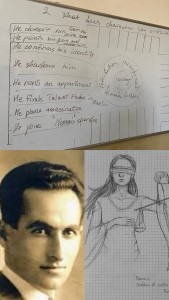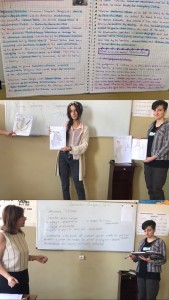His name was his destiny
Within the Unit Plan “Me in the world” the students of grade 11-1 perform an open class on the topic My name is my destiny. The students start the lesson by brainstorming on the importance of names in shaping people’s identity in general. They speculate on the recent psychological research that names can determine destiny and even affect it. They give their own examples focusing on the Armenian revolutionary Soghomon Tehlirian as an example. “What is in his name?”
The students make analogies with King Solomon who was noted for his wisdom and ability to make the right decisions. (The story, The Judgment of Solomon is attached to the lesson plan.) So, they come to a common ground that with the name like that (Solomon-Soghomon) he was destined for the great things. He made the only right decision and took a retribution by assassinating the real murderer.
Nemesis is another proper noun, the name of the Greek goddess of revenge and retributive justice in Greek mythology. The operation orchestrated by Soghomon Tehlirian and his fellows was called “Nemesis”. They plotted the assassination of Talaat Pasha, the man who was responsible for Armenian Genocide. This infamous name is engraved in our memory as one of the principal architects of the massacres.
To explore Soghomon Tehlirian’s personality and activate the knowledge they get, the students use Character Analysis Grid.
Resuming the lesson, they emphasize on the importance of remembering the names of the heroes, whose names went down in history.
At the end of the lesson, we provide a smooth transition to the upcoming learning material National Identity.
13.09.2022
Grade 11/1
Teacher: K. Aleksanyan


